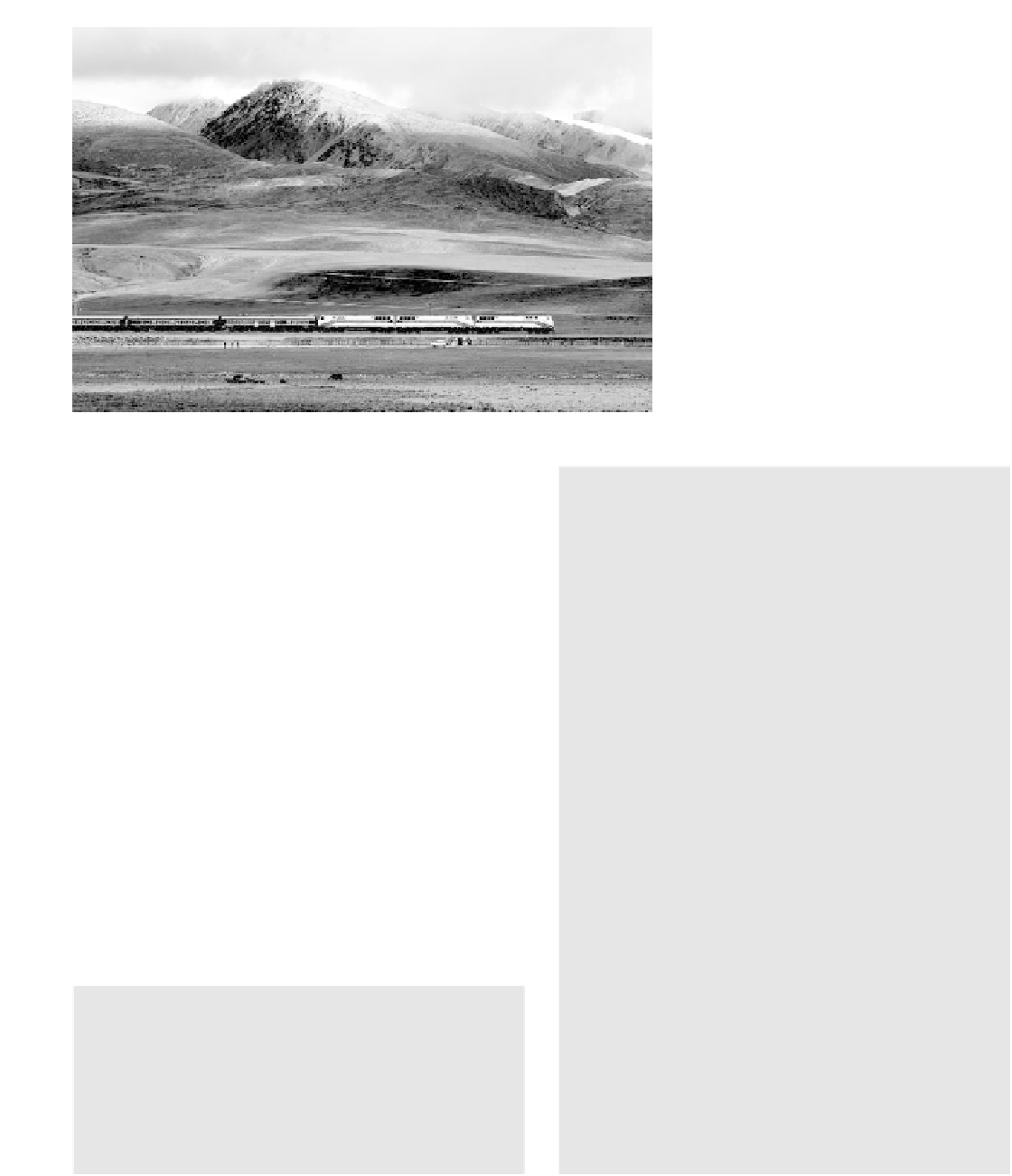Geography Reference
In-Depth Information
Figure 11-12
This rail line links Tibet' s capital Lhasa with
Beijing. At least 100,000 construction workers
laid this engineering marvel across rugged and
icy mountains at elevations of 16,640 feet
(5,072 m). The train carriages, which hold 900
passengers, are pressurized like an airplane so
that people can breathe properly . This train
will ensure that Han Chinese have easy access
to Tibet, thereby continuing the government' s
sinicization policies.
Copyright AP/World Wide
Photo/Color China Photo.
and Guangzhou, the volumn of passenger traffic is ex-
pected to grow exponentially .
In July 2006, considerable publicity accompanied the
opening of the highest railway in the world connecting
Beijing and Lhasa, Tibet (Figure 11-12). Reaching a
height of more than 16,400 feet (5,000 m) above sea
level, the passenger cars on the train must be pressurized.
The new Qinghai railway into Tibet will enhance China' s
access to vast reserves of iron and copper ore. T Tourism
revenue from travel to Tibet is expected to double.
New and improved road and rail transport is ex-
pected to reduce regional inequities. It will bring services
to remote towns and villages, facilitate trade, and im-
prove access to natural resources, thereby increasing
employment opportunities in mining, forestry , dam con-
struction, and other activities. However, there are down-
sides to increasing accessibility . In many cases villages
are being wiped out in the wake of construction, envi-
ronments are being devastated, pollution is on the in-
crease, and people are complaining about belching
smoke and noisy trains. But protests are of no avail.
formally adopted. In general terms, “the West”
refers to the western interior portion of China and
comprises ten provincial-level units defined as the
“western region” in the Seventh Five-Y ear Plan
(1986-1990): Xinjiang, Tibet, Qinghai, Gansu,
Ningxia, Shaanxi, Sichuan, Chongqing (which be-
came a centrally-administered municipality and
provincial-level unit in 1996), Y unnan, and
Guizhou. More recently , two other provincial-level
units—Inner Mongolia and Guangxi—were added
to the grouping. Most of these provincial-level units
share relatively low levels of development and ad-
verse environments such as high relief and dry cli-
mate. Among them are the five autonomous regions
and other areas that have high proportions of ethnic
minorities.
Announcement of the campaign invited much
attention from the public in part because of busi-
ness potential in the West. In 2001, under the
arrangement of the Hong Kong government, a busi-
ness delegation of more than 200 toured the West
and initiated a number of investment projects.
The campaign is also noteworthy because it
signals an apparent departure from the reform era' s
regional policy that focused heavily on the eastern
coastal region. Since the early 1990s, the Chinese
government has been under severe criticism for al-
lowing and even enabling regional inequalities to
worsen. Observers warn of political and social in-
stability if this trend continues. These criticisms
“Open Up the West”
Since the founding of the PRC, the Chinese govern-
ment has been active in designing and implement-
ing regional policy that has far-reaching impacts on
the geography of development. In 1999, a new pol-
icy called “Open Up the West” (
xibu da kaifa
) was




















Search WWH ::

Custom Search